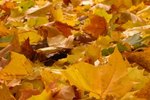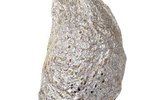The western pygmy blue butterfly is notable for being the smallest butterfly in North America, and possibly the smallest in the world. Due to its size, it may be tough to spot one, but look closely and you may just be rewarded.
Appearance
The wings of a western pygmy blue butterfly are copper-brown in color, with dull blue markings on the upperside of the wings, flecks of white on underside and white on the edges. These tiny butterflies are often overlooked, as their total wingspan measures just 3/8 to 3/4 of an inch. Although not the brightest of butterflies, its delicate markings make it stand out.
Range and Habitat
The western pygmy blue butterfly can only be found in North America. As the name suggests, it's mostly found along the west coast, but its range also creeps into some of the central states. It's more common further south -- where its range extends down to Mexico and Venezuela -- but can be found as far north as Oregon. They can be found in all sorts of habitats, but prefer alkaline areas, such as salt marshes and deserts. They can often be found near their host plants -- plants that their caterpillars can live on: pigweed, saltbush species and members of the goosefoot family.
Breeding
Although western pygmy blues have no set breeding season, mating activity is at its peak during late summer and early fall. A female may even lay two to four broods of eggs each year. After mating with a male, the female will lay her eggs on one of their host plants. The caterpillars that emerge are yellow-green in color, with small brown spots. They live on these plants for a time before pupating and metamorphosing into butterflies.
Additional Facts
Like other butterflies, western pygmy blues subsist on a diet of flower nectar, which they suck up using their proboscis -- a hollow, tongue-like appendage. These butterflies can be found all year, although they're rarely found during the winter in more northerly areas, due to colder temperatures and a lack of food.





